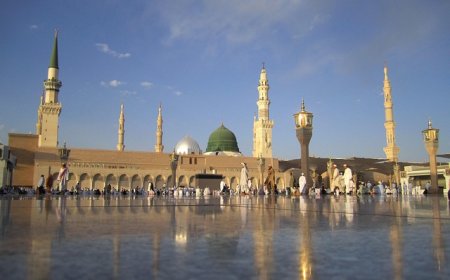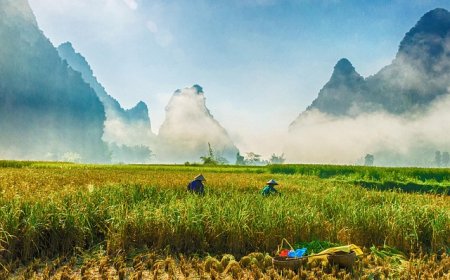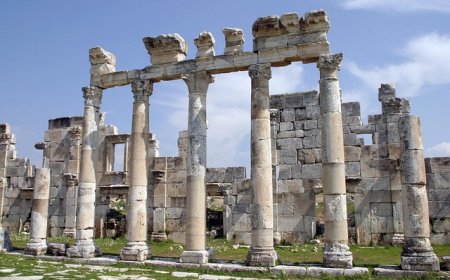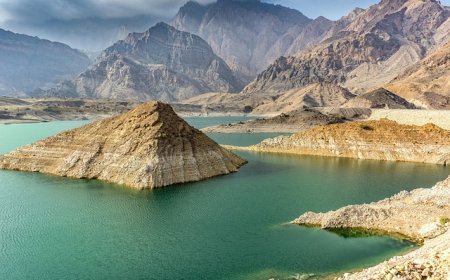Tajikistan for Students: Geography, Culture, and History of a Mountain Nation
Discover Tajikistan for kids. Learn about mountains, rivers, and Tajik culture. Includes fun facts, vocabulary words, and a quiz.
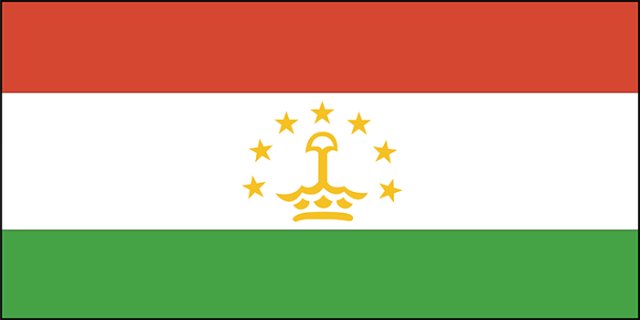
🇹🇯 Tajikistan: Land of Mountains, Rivers, and Ancient Roads
Introduction
Tajikistan is a mountainous country in Central Asia, where tall peaks, deep valleys, and flowing rivers shape the land and way of life. It’s one of the most rugged countries in the world, with over 90% of its land covered by mountains. For centuries, travelers passed through Tajikistan along the Silk Road, sharing ideas, cultures, and trade.
Today, Tajikistan is a country that blends ancient Persian heritage with modern independence. Its people are known for their hospitality, poetry, and deep connection to the natural world around them.
Geography and Landscape
Tajikistan is bordered by Afghanistan, Uzbekistan, Kyrgyzstan, and China. Its eastern region is dominated by the Pamir Mountains, known as the "Roof of the World." These mountains are some of the highest on Earth, with many peaks above 7,000 meters (23,000 feet).
The country has many fast-moving rivers, including the Vakhsh and Panj, which help generate hydroelectric power. Water from Tajik rivers flows into other countries and is very important for the region’s farming and energy.
The climate is continental and alpine, with cold winters in the mountains and hot summers in the lowlands. Earthquakes and landslides sometimes occur because of the steep terrain.
Cities and Regions
The capital city is Dushanbe, which means “Monday” in Tajik. It got its name from a weekly market that used to take place there on Mondays. Today, Dushanbe is a growing city with tree-lined streets, museums, fountains, and parks.
Other notable regions include:
- Khujand – One of the oldest cities in Central Asia, located in the fertile Fergana Valley
- Khorugh – A small town in the high Pamirs, home to mountain communities and a university
- Gorno-Badakhshan Autonomous Region – A remote and special area with unique culture, languages, and traditions
Many rural families still live in valleys or highland villages, farming, raising animals, or trading in local markets.
People, Language, and Culture
Tajikistan has a population of about 10 million people. Most are ethnic Tajiks, but there are also Uzbeks, Russians, and smaller groups like the Pamiris.
The national language is Tajik, which is a form of Persian and is written in the Cyrillic alphabet. Russian is also used in business and education, and in the eastern mountains, many people speak local languages like Shughni and Wakhi.
Islam is the main religion, and most Tajiks are Sunni Muslims. However, religion is practiced in a moderate, traditional way, and mixed with ancient customs.
Tajik culture is famous for hospitality, storytelling, music, and poetry. The great poet Rudaki, who helped shape Persian literature, was born in this region over a thousand years ago.
Festivals like Nowruz (Persian New Year) are celebrated in spring with dancing, singing, and special dishes.
Food and Daily Life
Tajik food is hearty and meant to be shared. It is often served on large plates, and people eat while sitting on cushions around a tablecloth called a dastarkhon.
Popular foods include:
- Plov – A rice dish cooked with carrots, onions, and meat
- Sambusa – Triangle-shaped pastries filled with meat or potato
- Non – Traditional round bread, often baked in clay ovens
- Shurbo – A clear soup with meat, vegetables, and spices
- Green tea – Served at nearly every meal or guest visit
In cities like Dushanbe, people live in modern apartments and work in shops, schools, or offices. In villages, daily life often includes tending gardens, caring for animals, and helping with family farms.
Children go to public schools, where they learn Tajik, Russian, math, science, and sometimes English. Education is free, and students are encouraged to complete secondary school.
History of Tajikistan
Tajikistan has a long and rich history connected to the Persian Empire and Silk Road. Cities like Khujand were centers of trade, learning, and culture for centuries.
After the fall of the Persian empires, the region was influenced by Islamic culture, and later by Mongols, Turkic tribes, and Russian rulers.
In the 1800s, Tajikistan became part of the Russian Empire, and then in the 20th century, it was included in the Soviet Union. During Soviet rule, roads, factories, and cities were built, but religious and cultural freedoms were restricted.
Tajikistan became an independent nation in 1991, then endured a civil war that ended in 1997. Since then, it has focused on peace, development, and cultural revival.
Nature and Wildlife
Tajikistan is home to rare and beautiful wildlife, especially in its mountains and forests. These include:
- Snow leopards
- Marco Polo sheep with long spiral horns
- Brown bears
- Golden eagles
- Ibex and mountain goats
The country has several national parks, including the Tajik National Park in the Pamirs, a UNESCO World Heritage Site. These areas protect nature and offer hiking, climbing, and eco-tourism opportunities.
Because of its glaciers and rivers, Tajikistan also plays a key role in water security for all of Central Asia.
Vocabulary List
| Word | Definition |
|---|---|
| Pamir Mountains | A very high mountain range in eastern Tajikistan |
| Dushanbe | The capital of Tajikistan, named after the word for Monday |
| Plov | A dish made with rice, meat, and carrots, common in Central Asia |
| Dastarkhon | A cloth or table used for serving shared meals |
| Cyrillic alphabet | A writing system used in Tajik and Russian |
| Silk Road | An ancient trade route linking Asia and Europe |
| Nowruz | The Persian New Year, celebrated in spring |
| Hydroelectric power | Electricity made from the energy of flowing water |
👧🧒 Kid-Friendly Summary
Tajikistan is a mountain country in Central Asia where people speak Tajik and live in cities, valleys, and small villages. The capital is Dushanbe, and many people still farm or raise animals.
The land has tall mountains, fast rivers, and rare animals like snow leopards. People eat plov, drink tea, and enjoy stories, poems, and music. Tajikistan is a peaceful place with a long history and strong traditions.
🧠 Interactive Quiz: What Do You Know About Tajikistan?
1. What is the capital of Tajikistan?
A) Bishkek
B) Tashkent
C) Dushanbe
D) Ashgabat
✅ Answer: C) Dushanbe
2. What mountain range is in Tajikistan?
A) Andes
B) Himalayas
C) Pamirs
D) Alps
✅ Answer: C) Pamirs
3. What river provides hydroelectric power in Tajikistan?
A) Nile
B) Amazon
C) Vakhsh
D) Yangtze
✅ Answer: C) Vakhsh
4. What writing system does Tajik use?
A) Latin
B) Chinese
C) Arabic
D) Cyrillic
✅ Answer: D) Cyrillic
5. What is plov?
A) A game
B) A drink
C) A rice dish with meat and carrots
D) A traditional dance
✅ Answer: C) A rice dish with meat and carrots
6. What festival celebrates the New Year in Tajikistan?
A) Eid
B) Nowruz
C) Ramadan
D) Holi
✅ Answer: B) Nowruz
7. What is a dastarkhon?
A) A type of house
B) A game
C) A cloth for serving meals
D) A school building
✅ Answer: C) A cloth for serving meals
8. When did Tajikistan become independent?
A) 1971
B) 1991
C) 2001
D) 1945
✅ Answer: B) 1991


















































